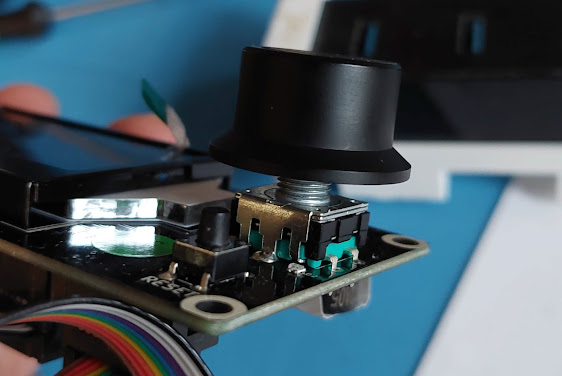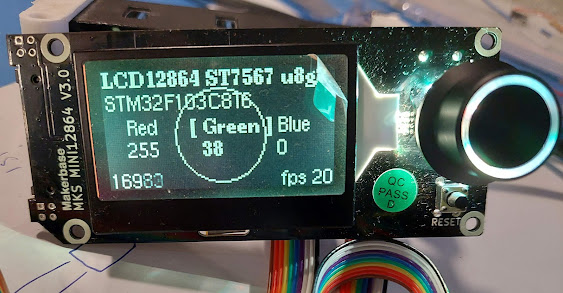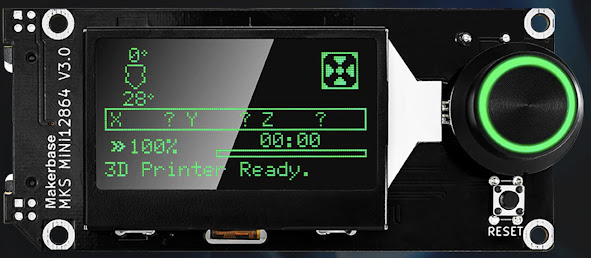Using 3D Printer LCD module RGB MiniLCD12864V3 Part 4 Test App

Using 3D Printer LCD module RGB MiniLCD12864V3 Part 4 Test App Now we can use all parts in the module. 1 Part1 Intro introduction to the module pros and cons and ribbon cable pin definition. 2 RGB backlight enabling the RGB backlight for the LCD screen 3 Part2 using LCD with SPI and U8G2 LCD wire connection, SPI setting, and using U8G2 lib to draw on the LCD. 4 Part3 Using the rotary encoder also use beeper and buttons. Now we can make "full" use of this lcd module, except for the SD card, I guess this can wait, since not many DIY project really need a SD card... With all these feature enabled, we now can make a test app. Test App to do list: Press any button, buzzer beeps. To use rotary encoder to change the LCD RGB backlight, and apply to the LCD backlight. Make a simple GUI on the LCD screen, make it work with the rotary encoder. Video https://youtu.be/t1N9a9b_4fA Source code https://github.com/ntchris/stm8_stm32/tree/master/blu...


